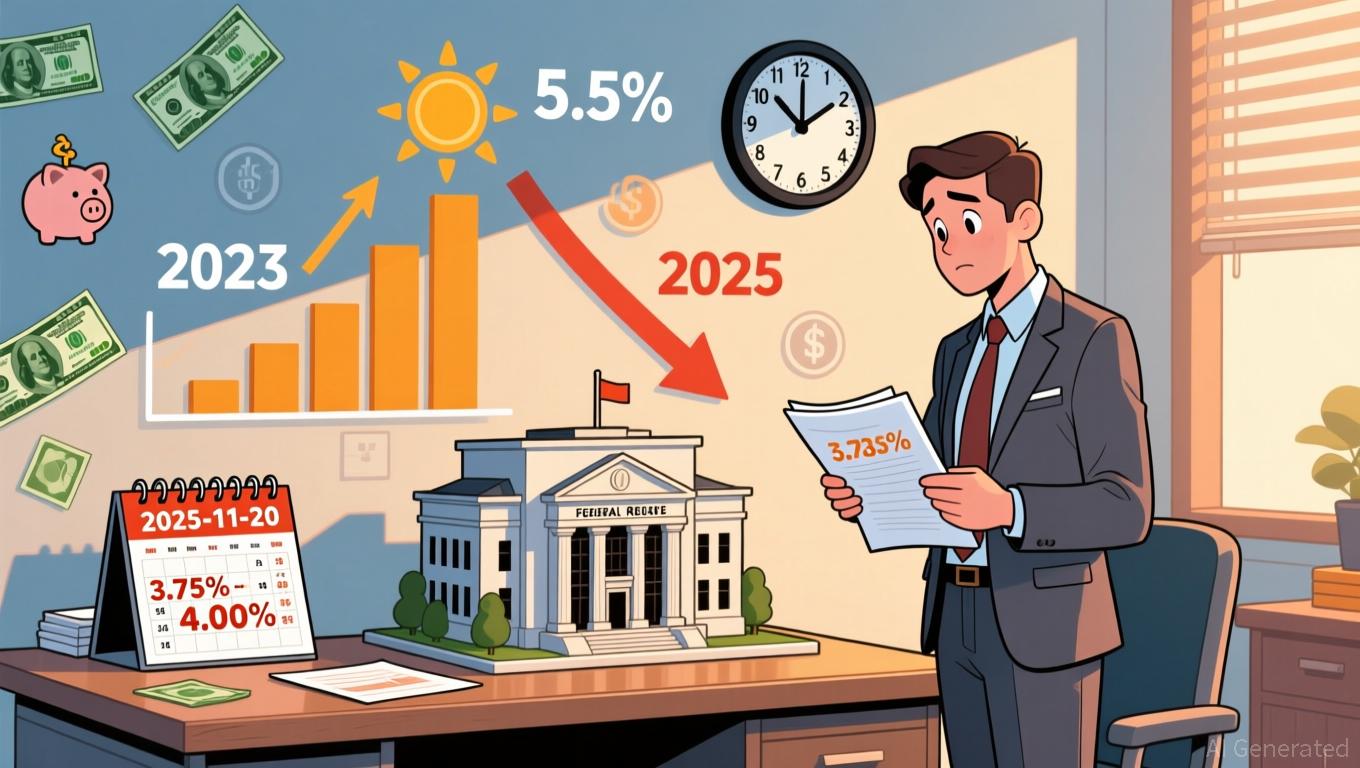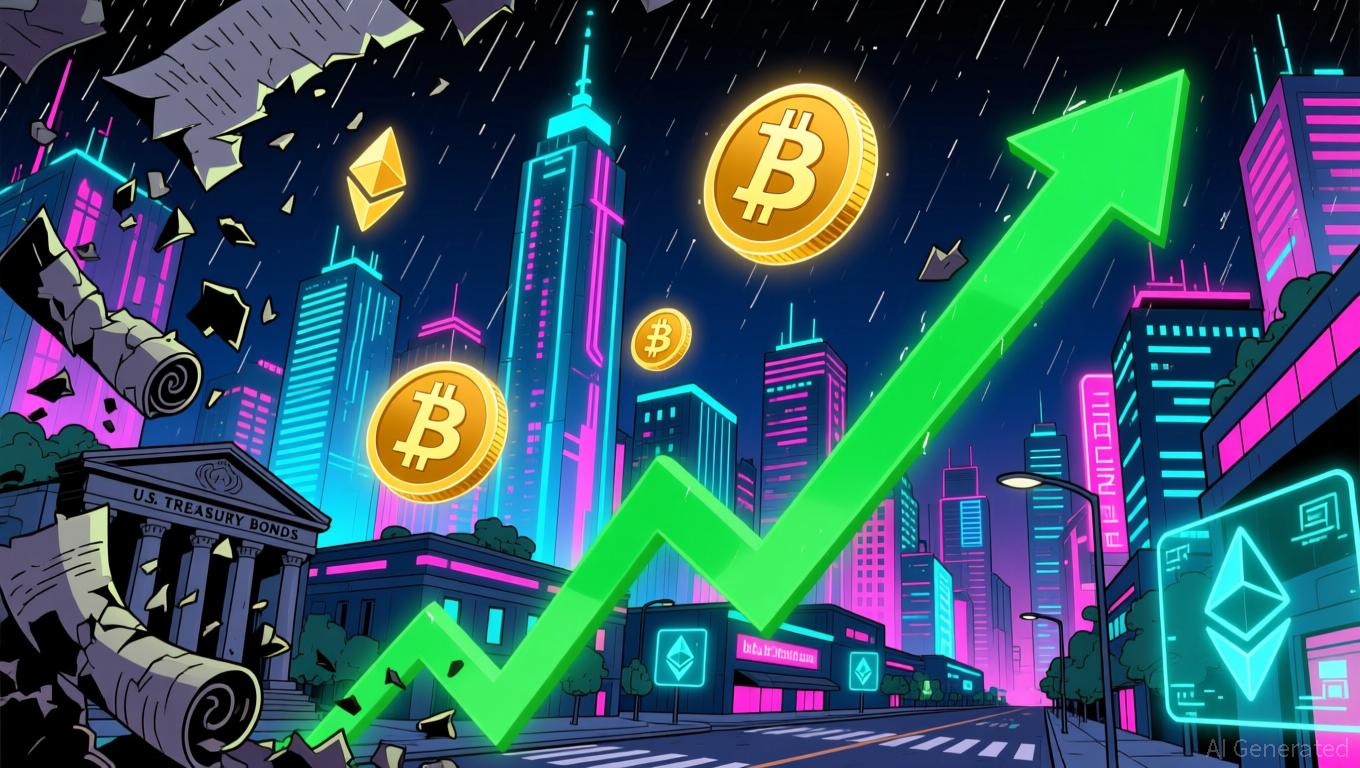Post-peak CD returns threatened by Fed reductions—investors hurry to lock in rates
- CD rates peaked at 4.20% APY in late 2025 but declined as Fed rate cuts reduced federal funds to 3.75%-4.00%. - Short-term 12-month CDs remain competitive at 3.92% APY, outperforming longer-term products amid expected further Fed cuts. - Analysts urge investors to lock in current rates before December's anticipated third cut, as 2025's three reductions follow 2024's three cuts. - Strategic allocation to high-APY CDs maximizes returns, with $100k in 12-month terms generating $3920 vs. $3600 in 24-month te
In late November 2025, Certificate of Deposit (CD) rates peaked at an annual percentage yield (APY) of 4.20%, highlighting a market still adapting to changes in Federal Reserve policy. Recent figures from financial monitoring services indicate a modest drop in CD rates across most durations, a trend linked to the central bank’s ongoing rate reductions this year. Nevertheless, investors can still find attractive yields, especially with short-term options such as 12-month CDs
In October 2025, the Federal Open Market Committee (FOMC) lowered the federal funds rate to a 3.75%-4.00% range, following two rate cuts in 2025 and three in 2024. These moves, designed to curb inflation while supporting economic expansion, have caused CD rates to fall from their mid-2023 highs of 5.25%-5.50%. Even with this decline, today’s rates are still near historic highs, with the leading 10% of 12-month CDs yielding 3.92% APY

Experts in the market recommend that investors act soon to secure current rates before they decrease further. The FOMC is scheduled to convene again in December 2025, and another rate cut is widely expected. Data from CD Valet reveals that median rates for 24-month CDs have leveled off, while 36- and 48-month CDs have experienced slight drops. For those saving, short- and medium-term CDs—especially 12- or 24-month terms—continue to be the most appealing choices. A 12-month CD with a 3.92% APY could yield better returns than longer-term CDs, which have seen rates fall to 3.60%
More investors are adopting strategic deposit approaches. Financial professionals suggest putting larger amounts into CDs with higher APYs to maximize earnings. For example, investing $100,000 in a 12-month CD at 3.92% APY would earn $3,920 in interest, compared to $3,600 from a 24-month CD at 3.60%. This strategy takes advantage of the current market to boost returns before any further rate reductions occur.
Looking at history, timing is crucial. In the early 1980s, CD rates soared into double digits due to high inflation and aggressive Fed rate hikes. Today’s rates, though lower, reflect a more stable economic setting. Investors should keep an eye on FOMC announcements and adjust their CD investments as needed. With another rate cut likely in December, the opportunity to lock in favorable rates may soon narrow before rates settle at a new, lower level.
Disclaimer: The content of this article solely reflects the author's opinion and does not represent the platform in any capacity. This article is not intended to serve as a reference for making investment decisions.
You may also like
Bitcoin News Update: Federal Reserve's Shift to Dovish Stance Sparks Digital Asset Rally Amid Supply Constraints, BTCM's Second Phase Poised to Capitalize
- Fed ends quantitative tightening, boosting markets as Bitcoin Munari (BTCM) enters $0.22 Phase 2 presale. - Dovish pivot with inflation below 2% drives risk-on sentiment, pushing December rate cut odds above 70%. - BTCM's fixed-supply model (21M tokens) and 2,627% projected return align with scarcity-driven crypto trends. - Structured presale pricing ($0.10→$0.22) and Solana's $58M daily ETF inflows highlight institutional adoption.

Bitcoin News Update: Report Reveals Bitcoin’s Future Depends on Macroeconomic Transparency and Trust from Institutions
- Bitcoin's 36% October drop sparks debate over recovery potential amid institutional sell-offs and ETF divestment risks. - Institutional holders (1,000+ BTC) reduced exposure by 1.5%, contrasting retail exits, mirroring 2019-2020 redistribution patterns. - Key support at $89,400-$82,400 and Fed rate cut odds (69.3%) highlight macroeconomic influence on Bitcoin's risk-on/risk-off dynamics. - Whale accumulation (100-10,000 BTC) contrasts retail selling, but 1,000-10,000 BTC cohort distribution remains a bea

The Growing Interest in Socially Responsible Investing (SRI) within Legal and Public Interest Fields
- SRI is shifting toward education and legal sectors to address systemic inequities, merging financial returns with social impact. - UC Berkeley's Public Interest Scholars Program funds law students for public service, ensuring measurable societal benefits through accountability frameworks. - Digital tools and ETFs like ESGU/VFTAX enhance SRI transparency, enabling investors to track real-time social impact in education and legal equity initiatives. - Institutional commitments to IDEAA principles and partn

Bitcoin News Update: Major Investors Commit $21 Million in Leveraged Positions Amid Uncertainty Over Bitcoin's Bullish Momentum
- Crypto whale Huang Licheng boosted BTC/HYPE leveraged longs to $21.24M via Hyperliquid, using 40x/10x leverage. - Bitcoin's 30% price drop to $80k+ since October 2025 reflects macroeconomic risks and leveraged position liquidations. - Institutional demand persists: Harvard holds $443M in Bitcoin ETFs, Strategic Reserve owns 198,000 BTC. - Analysts split on BTC forecasts: $200k+ by 2025 vs. $80k-$100k ranges amid Fed policy and adoption uncertainties. - Whale-driven leveraged bets amplify volatility in HY